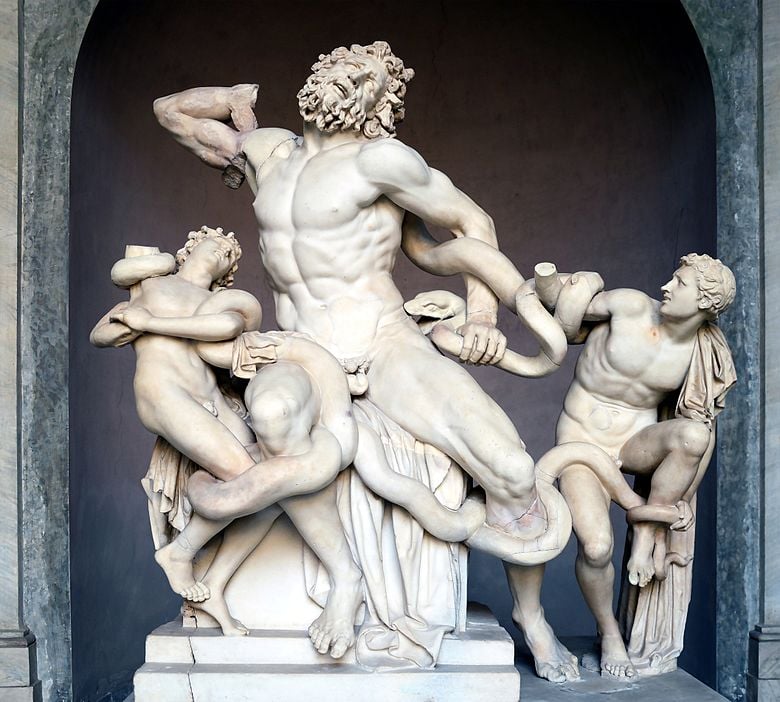Laocoön and His Sons
The arm after refixing, 2010
When the statue was discovered, Laocoön’s right arm was missing, along with part of the hand of one child and the right arm of the other, and various sections of snake. The older son, on the right, was detached from the other two figures. The age of the altar used as a seat by Laocoön remains uncertain. Artists and connoisseurs debated how the missing parts should be interpreted. Michelangelo suggested that the missing right arms were originally bent back over the shoulder. Others, however, believed it was more appropriate to show the right arms extended outwards in a heroic gesture.
According to Vasari, in about 1510 Bramante, the Pope’s architect, held an informal contest among sculptors to make r…
Continue Reading (12 minute read)


